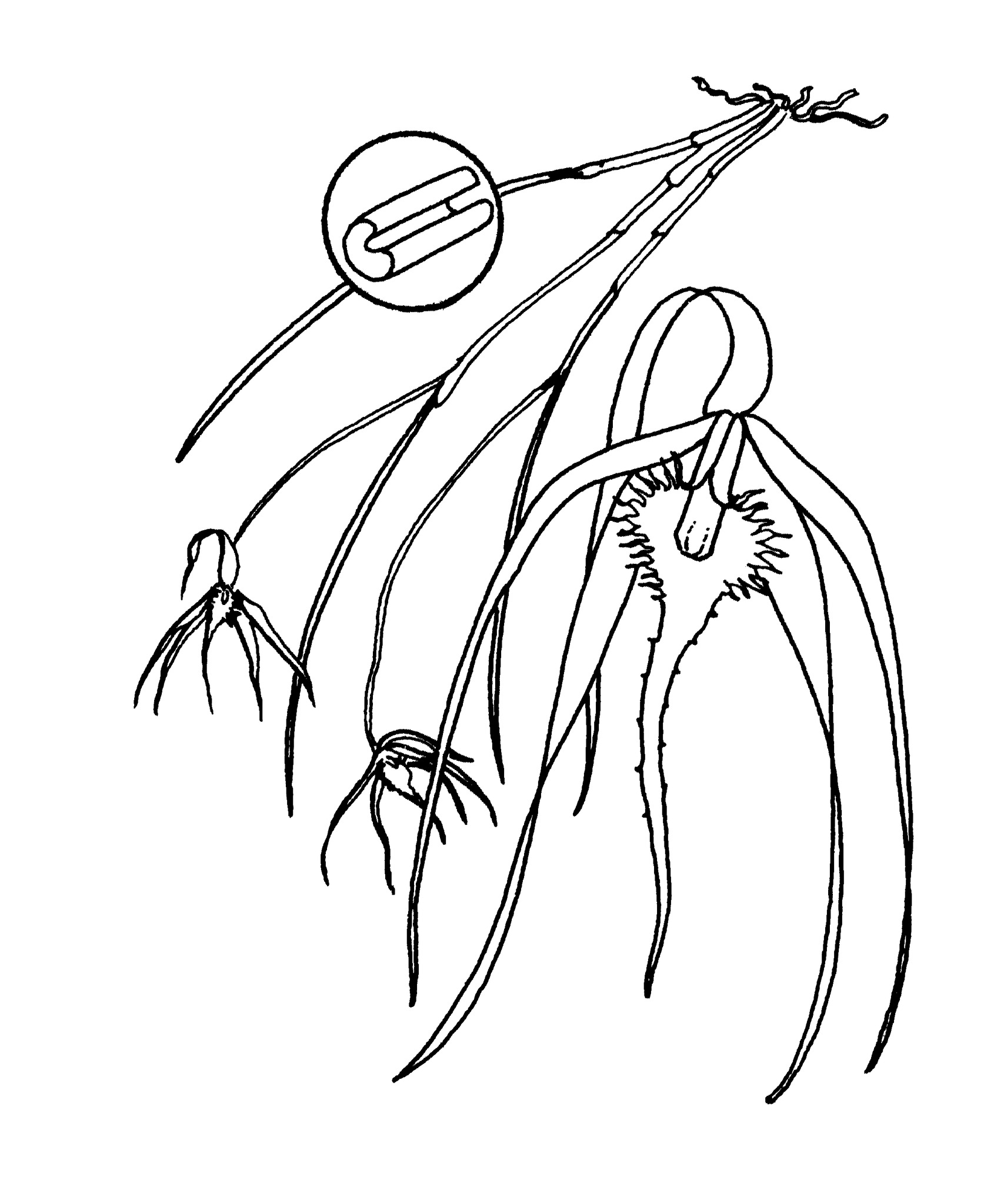
After Antonio Musa Brassavola, a 17th century Italian nobleman and botanist.
Epiphytic or epilithic herbs, sympodial, with creeping rhizomes. Stems cane-like, dense or sparse, green or purplish. Leaves apical, solitary, cylindrical or flat, fleshy. Inflorescences usually terminal racemes. Flowers resupinate, few, large, often fragrant at night, usually white or greenish. Sepals and petals similar, linear, spreading. Labellum entire or obscurely 3-lobed, base narrow and enclosing column, tip broad. Column short, 2-winged, toothed at tip. Pollinia 8, with prominent caudicles.
About 15 species from Mexico, the West Indies, C and S America.
Large flowers with narrow sepals and petals and a large clawed labellum with broad tip.
Withner (1998).
Source: (2005). Orchidaceae. In: . Horticultural Flora of South-eastern Australia. Volume 5. Flowering plants. Monocotyledons. The identification of garden and cultivated plants. University of New South Wales Press.
